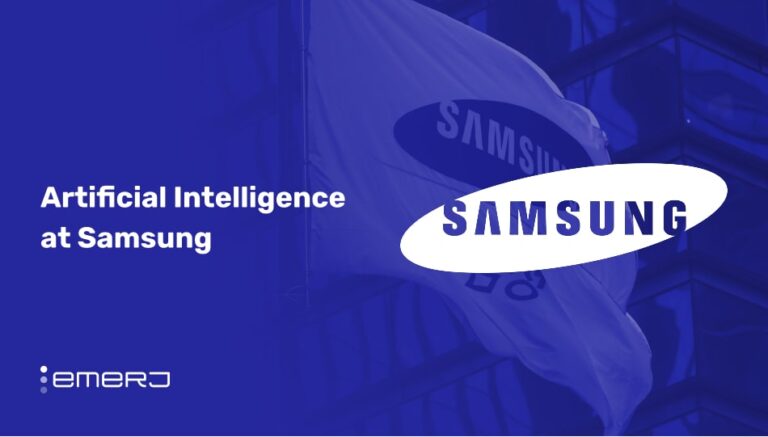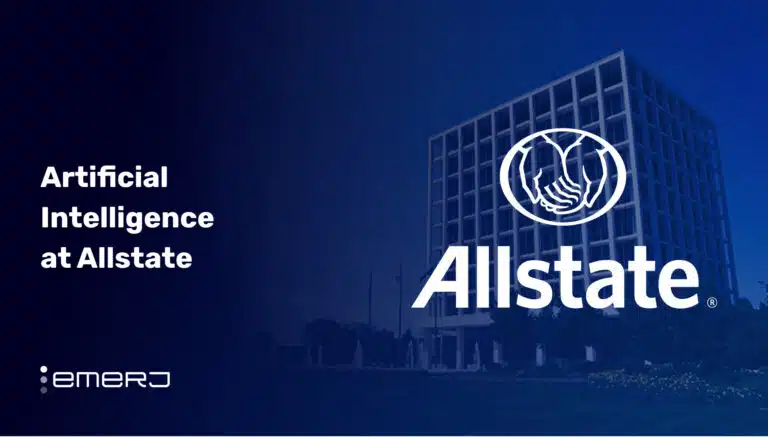Although AI has broader applications in the travel and tourism industry, facial recognition kiosks at airports have been one of the most prominent applications in the public discussion about AI. Their promise: to increase security and potentially speed up passenger boarding.
We had intended to write an article about the broader use of AI in the commercial aviation industry, but no other application has more traction in the industry than facial recognition. Thus, in this report, we’ll detail five companies offering facial recognition technology for a variety of use cases, including airport security and passenger processing.
That said, all of these companies offer facial recognition software to a variety of industries. It’s rare for a facial recognition company to cater to only one industry.
These companies are detailed below with the software they offer:
- Auroroa Computer Services, SenseTime, and Société Internationale de Télécommunications Aéronautiques (SITA), all market their facial recognition software for passenger processing purposes. Their software could be installed at self-service kiosks and turnstiles at airports.
- Kairos and Yitu Technology both market their facial recognition software for security purposes. Their software seems to be installed at self-service kiosks and integrated with security cameras laden throughout an airport.
Interested reader may want to read our report on how the 4 largest airlines use AI, but we’ll begin our exploration of facial recognition at airports with the companies offering passenger processing applications, starting with Aurora Computer Services:
Passenger Processing
Aurora Computer Services
Aurora Computer Services offers Aurora Imaging & Recognition (AIR) engine, which it claims can help validate a person’s identity quickly and efficiently using biometrics and facial recognition technology.
Aurora Computer Services can integrate the software into a client’s passenger scanning system as a software development kit (SDK), if any, or bundle it with its Aether sensor unit.
The company states the machine learning model behind the software was trained on years of infrared data showing facial features from various angles and in various lighting conditions. These images would have been broken down and labeled as parts of a face, separately and as one entity. These labeled images would then be run through the software’s machine learning algorithm. This would have trained the algorithm to discern the sequences and patterns of 1’s and 0’s that, to the human eye, form the various features such as the nose, the eyes, and the mouth of an individual face as displayed in a captured image, social media, or other sources.
The user could then upload a captured image that is not labeled into the AIR. The algorithm behind the software would then be able to detect, recognize, or classify a face or feature, match one image to another, find look-alikes, or do best-match identification. The system then alerts a human employee of a possible mismatch in the live person and the captured image in real time.
Below is a short 1.5-minute video demonstrating how AIR works in a secure location:
Aurora Computer Services claims to have helped Atkins Global convince more airport clients to invest in facial recognition technology. Atkins Global integrated Aurora Computer System’s AIR software into its Passenger Authentication Scanning System (PASS 2). According to the case study, Atkins Global was able to pass security standards of the UK Border Force for passenger management during trials at Heathrow Airport and elicited positive responses from passengers and staff.
Aurora Computer Services also lists security and access company KABA (now dormakaba Group) as well as Heathrow Airport and Manchester Airport as some of their past clients.
Thomas Heseltine is CEO at Aurora Computer Services. He holds a PhD in Biometrics from the University of York. Previously, Heseltine served as Biometrics Systems Engineer at Bio4 Ltd.
SenseTime
SenseTime offers SenseKeeper, which it claims can help airports identify and authenticate passengers at turnstiles using facial recognition technology.
SenseTime claims users can integrate the turnstile version of the facial recognition device into the pedestrian gate as well as other security touch points, and use a variety of authentication systems, including intelligent ID cards, two-dimensional code, and live images.
We can infer the machine learning model behind the software was trained on thousands of images and footage from common open-source libraries such as the cloud, social networks, mobile uploads, and embedded hardware platforms showing people’s faces from various angles and in various lightning conditions. These images and footage would have been labeled as actual faces, 3D images, drawings, printouts, or disguised faces using wigs and masks. These labeled images and footage would then be run through the software’s machine learning algorithm. This would have trained the algorithm to discern the sequences and patterns of 1’s and 0’s that, to the human eye, form the image or video of actual faces, drawings, printouts, or disguised faces using wigs and masks.
The user could then upload the images or footage that are not labeled into SenseTime. The algorithm behind the software would then be able to identify and detect images or footage that may be considered anomalous. The system then alerts a human employee of these examples of anomalous images or footage in real time.
SenseTime claims to have demonstrated the efficacy of SenseKeeper in decreasing the time needed to grant access to secure areas such as airports and business premises. Partner company Entrypass integrated the SenseKeeper Face Recognition Terminal with its video management and control platform. According to the case study, SenseKeeper enabled Entrypass to recognize and verify an authorized person as they approach a turnstile, allowing access in a millisecond. Entrypass states SenseKeeper can recognize one face out of one million in that time.
SenseTime also lists Suning and Focus Media as some of its past clients.
Li Xu is CEO at SenseTime. He holds a PhD in Computer Science & Engineering from The Chinese University of Hong Kong. Previously, Li served as Manager and Advisory Researcher at Lenovo.
Société Internationale de Télécommunications Aéronautiques (SITA)
SITA offers Smart Path, which it claims can help airports and airlines process passengers from check-in to boarding quickly using biometrics at self-service kiosks and checkpoints.
SITA claims airports and airlines can integrate the software into existing infrastructure and systems such as including secure access gates, check-in kiosks, self-bag drop facilities, border control stations, boarding gates, and other standard common-use systems.
We can infer the machine learning model behind the software was trained on millions of images and videos showing facial features and characteristics from various angles and in various lightning conditions. These images and footages would have been labeled as authorized or verified for access. These labeled images and footages would then be run through the software’s machine learning algorithm. This would have trained the algorithm to discern the sequences and patterns of 1’s and 0’s that, to the human eye, form the image or footage of an identified person as displayed in the screen of the kiosk or touch point.
The user could then upload the image or footage that is not labeled into SmartPath. The algorithm behind the software would then be able to identify if the live person matches the stored image in the system. The system then alerts a human employee of a possible mismatch between the live image or footage to the stored image in the system in real time.
Below is a 4-minute video detailing how SITA helped British Airways process passengers at Orlando International Airport:
British Airways integrated the software in its check-in, bag drop, and boarding stations. According to the case study, British Airways received very positive feedback from passengers, and Chief Information Officer John Newsome of the Greater Orlando Aviation Authority states the software provides an “easy experience” when it comes to passenger processing.
SITA also lists Lanseria International Airport, Virgin Atlantic, and El Dorado International Airport as some of their past clients.
Barbara Dalibard is the Chief Executive Officer at SITA. She holds a Master’s Degree in Mathematics from the Ecole Normale Supérieure. Previously, Dalibard served as CEO at Voyages-SNCF.com.
Airport Security
Kairos
Kairos offers Face Recognition API (application programming interface), which it claims can help any business with their security issues by using facial recognition technology.
Kairos claims developers can integrate facial identities, emotions, and other data into their apps and services using a Representational State Transfer (REST)-style API.
The company states the machine learning model behind the software was trained on publicly available and client-uploaded images showing human faces from various angles and in various lighting conditions. These images would have been labeled according to user-specified identifiers and categories. These labeled images would then be run through the software’s machine learning algorithm. This would have trained the algorithm to discern the sequences and patterns of 1’s and 0’s that, to the human eye, form facial features of an authenticated image as stored in the client database.
The user could then upload an image that is not labeled into the custom Face Recognition API. The algorithm behind the software would then be able to detect, analyze, and recognize faces and match them to images previously authenticated in the database. The system then alerts a human employee of possible mismatch between the unlabeled image and any image in the client database.
Below is a short 1.21-minute video demonstrating how Facial Biometrics works for analyzing emotion.
Kairos claims to have helped Veritone in quickly identifying one out of thousands of enrolled faces in unlabeled images and videos. Veritone developed its own platform using the Face Recognition API. According to the case study, Veritone was able to provide insights to their clients by enrolling over ten thousand images and processing about five million faces in 12 months.
Kairos also lists Legendary and Ubanx as some of their past clients.
Dr. Stephen Moore is the Chief Scientific Officer at Kairos. He holds a PhD in Computer Vision from the University of Surrey. Previously, Moore served as Co-Founder and Chief Technology Officer at Emotion Reader (acquired by Kairos on June 11, 2018).
Yitu Technology
Yitu Technology offers Smart Security solutions, which it claims can help airports, transportation centers, commercial establishments, shopping centers, and other urban areas with security issues using machine vision and facial recognition technology.
The company states the machine learning model behind the software was trained on millions of images and footages captured by front-end video devices (ATMs, public transportation videos, security system images, city monitoring cameras) and stored in large scale databases showing faces from various angles and in various lighting conditions. These images and footages would have labeled as authorized, valid, unauthorized, or invalid. These labeled images would then be run through the software’s machine learning algorithm. This would have trained the algorithm to discern the sequences and patterns of 1’s and 0’s that, to the human eye, form the facial features and characteristics of an authorized or unauthorized person as displayed on the security camera.
The user could then upload an image or footage that is not labeled into the Smart Security solution. The algorithm behind the software would then be able to identify the faces that are already in its database. The system then shows a human employee of a valid match or possible mismatch in real time.
Below is a short 1.21-minute video demonstrating how the Smart Security solution works in various industries.
Yitu Technology claims to have helped the Suzhou Municipal Public Security Bureau in identifying suspects even if they are in disguise. Suzhou Municipal Public Security Bureau integrated the Dragonfly Eye Generic Portrait Platform technology, part of the Smart Security solution, into its public security system. According to the case study, the Suzhou Municipal Public Security Bureau was able to apprehend three suspects in disguise within 24 hours of deploying the platform. A follow up on the case study claims that integrating the system has resulted in solving more than 500 criminal cases since June 2015.
Yitu Technology also lists Microsoft, Tencent, and China Merchants Bank as some of their past clients.
Leo Zhu is Co-Founder and CEO at Yitu Technology. He holds a PhD in Statistics from the University of California, Los Angeles (UCLA). Previously, Zhu served as a Postdoctoral Fellow at the AI Laboratory of the Massachusetts Institute of Technology.
Header Image Credit: Clark Nexsen





















